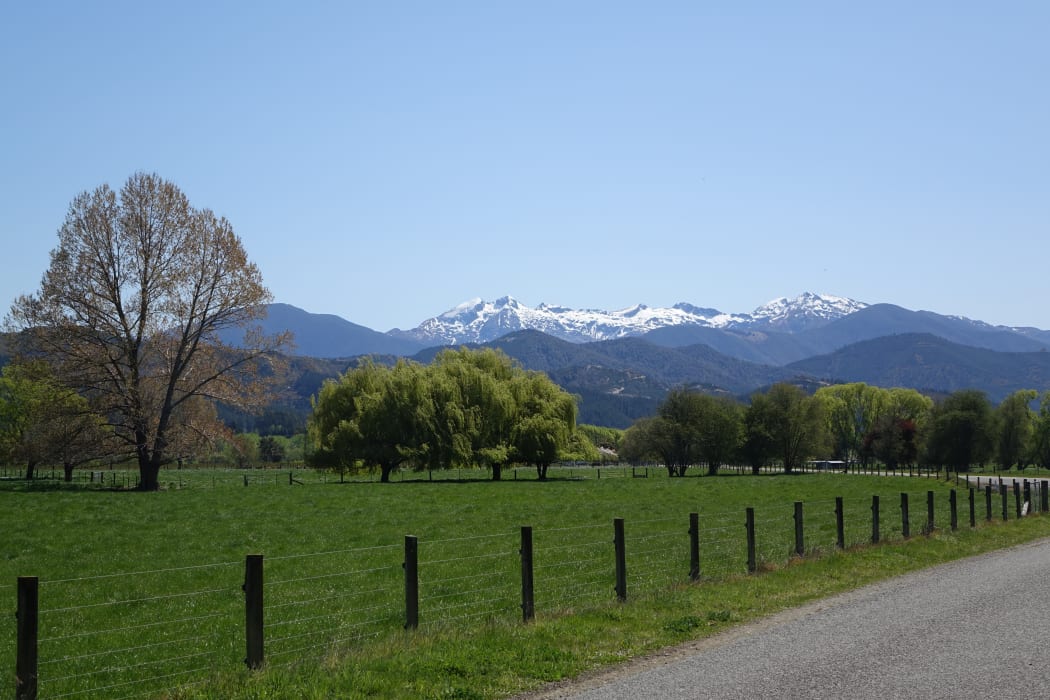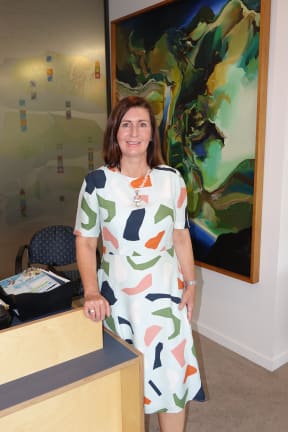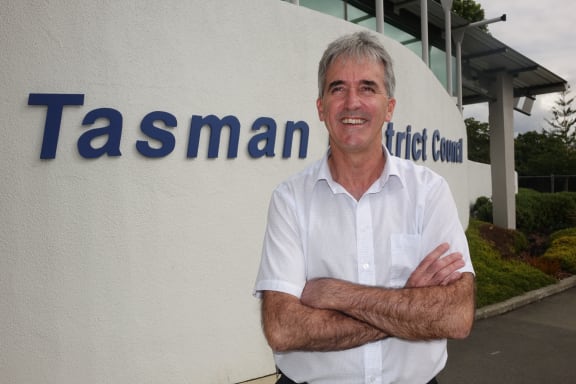Property owners could expect annual rates increases of between $29 dollars and up to $160 to pay for a large dam it plans to build south of Richmond, the Tasman District Council says.

Arthur Ranges Photo: RNZ / Tracy Neal
The council is now calling for feedback on an $82 million dam planned for the Lee Valley, which has been in the concept stage for about a decade now. An earlier plan was stalled by disagreement over the funding model.
Figures released by the council on Friday in tandem with the consultation documents show the annual cost of the dam would peak at $29 for 51 percent of the district's 24,000 ratepayers.
The effect on rates and water bills for the remaining 49 per cent would depend on where they live, and whether they are connected to a council water supply, but could be up to $160 a year.
The council and irrigators on the Waimea Plains are driving the project, with the council's share of costs close to $27 million in capital, and an estimated $715,000 a year in operating expenses.
Two public information groups were launched prior to the opening of consultation on the dam.
A former Parliamentary Commissioner for the Environment, Morgan Williams, heads the newly-formed Water Solutions Advisory Group. He said the group, which includes scientists, economists, resource planners and primary industry consultants, has not been set up to side with the Tasman council, but it does believe the dam is the best option.
Mr Williams said water will become increasingly scarce in what is one of the country's fastest growing regions, especially where primary production needs compete with urban growth.
He is among a new wave of arrivals to Tasman, and said the region - like the rest of the country - has been sleep-walking through the impending effects of climate change.
"It's a problem of 'us' as a society that we're comfortable, and we don't always understand just how big some of the things that are going to affect our future are, and they're here today - not tomorrow."
The head of a newly formed opponent group, Murray Dawson, said residents are not being told all the facts. He said there seemed to be a misunderstanding about water shortages, and where the resource came from.
Tasman residents are frequently subject to water restrictions during the dry summer months.
Mr Dawson said most of Tasman's urban supply came from the ground, where there were "tens of millions" of cubic metres in aquifers.

Rachel Reese. Photo: RNZ / Tracy Neal
He said water use is declining with changed land use, particularly in areas planted in vineyards which used less water than other crops.
The dam has the stirrings of support from Tasman's neighbour, the Nelson city council, which recently agreed to seek feedback on an option to grant $5 million to the project.
Mayor Rachel Reese said analysis by the institute of economic research shows the dam would deliver more than $20 million worth of GDP benefit to Nelson city alone, and the role the dam played in the Nelson-Tasman regional economy had to be widely considered.
The Tasman mayor Richard Kempthorne is urging residents to learn more about the proposal and to make a submission.
He said the current plan includes interest-free funding from Crown Irrigation and $7m from the Freshwater Improvement Fund - a move that drew recent criticism from economist Peter Fraser, who believed the dam would be uneconomic.

Richard Kempthorne. Photo: RNZ / Tracy Neal
He said the modelling showed it would supply water at four times the average irrigation price - twice the price of the now-shelved Ruataniwha project in the North Island.
Mr Kempthorne did not think funding streams were now at risk from any changes made by the new government, but the pledges are subject to the outcome of public consultation and the ability of the other parties involved to raise their share of money.
Public consultation runs from now until late November.


